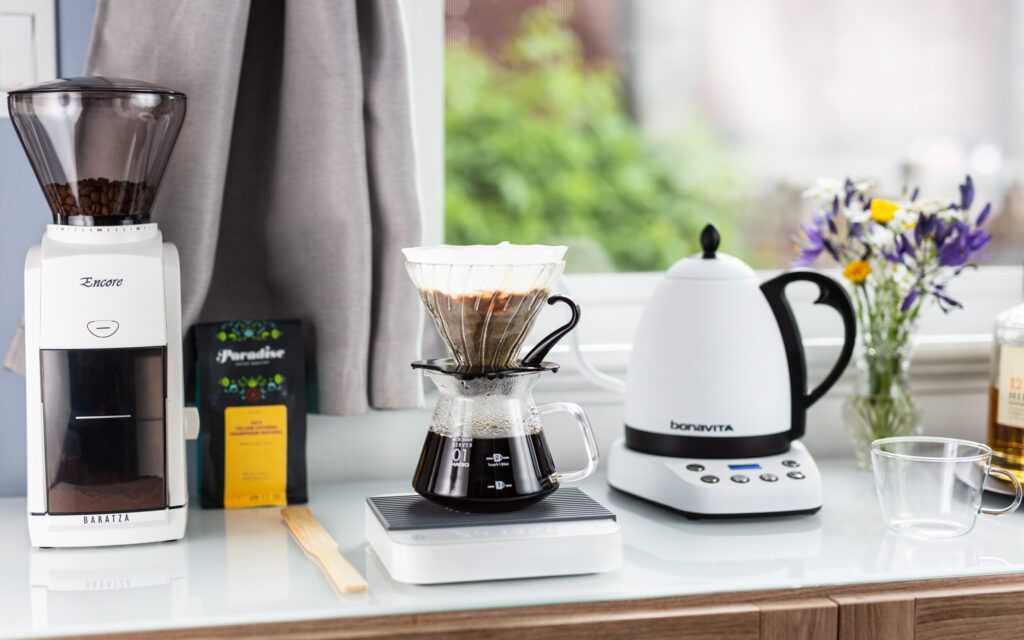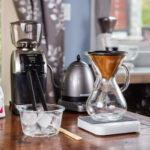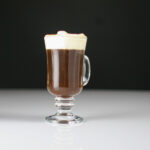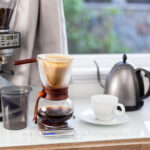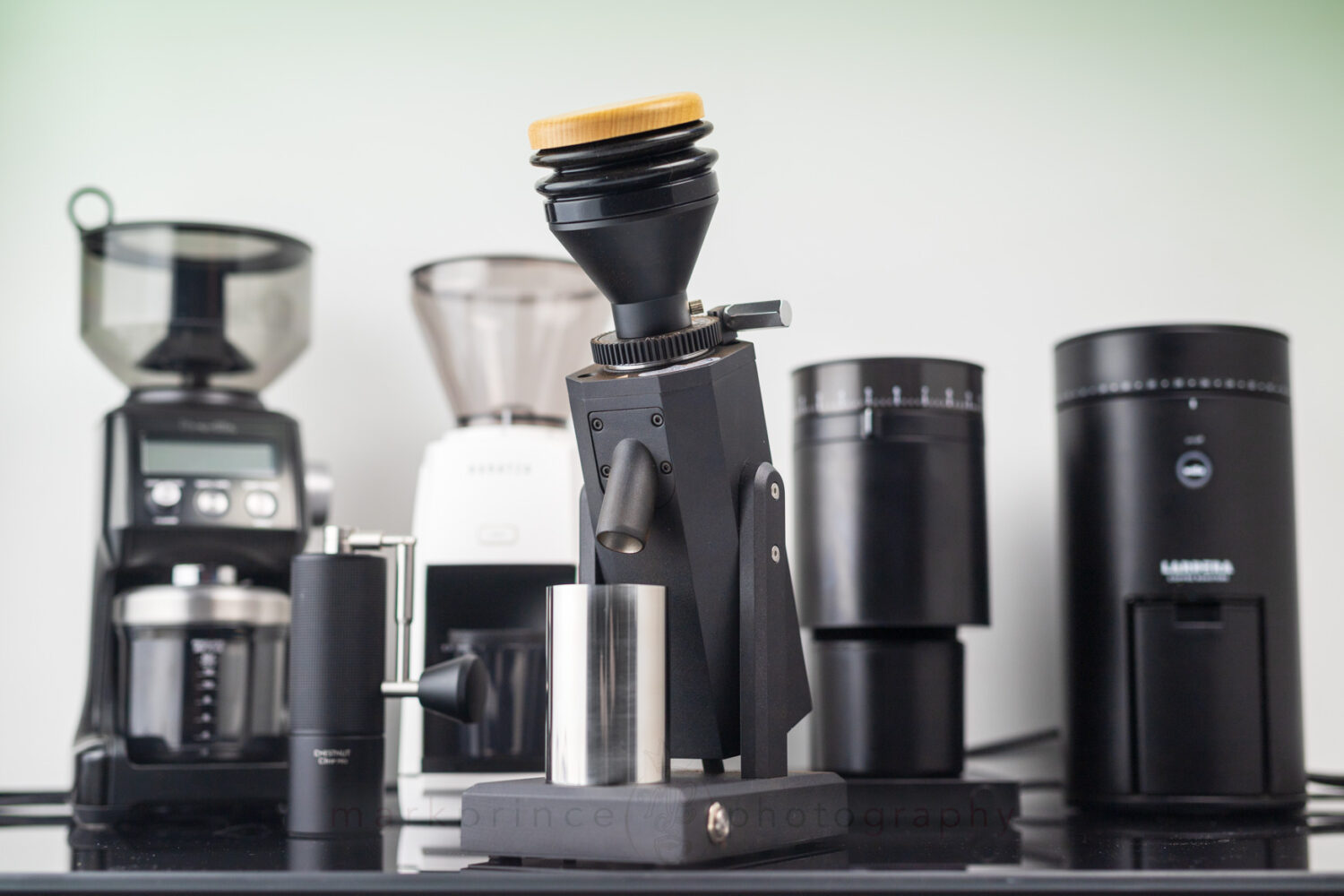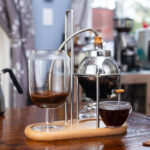
In this cold coffee how to, we’re going to focus a bit on styles of cold coffee served in the far east, but not from Japan, land of the iced coffee towers. There’s an iced coffee beverage that has been around so long that it has been somewhat modified and dare I say it – bastardized (a bit) – in the United States.
That iced coffee method is known as Vietnamese Iced Coffee, or as the Vietnamese call it, ca phe sue dah. (phonetic spelling)
At its core, Vietnamese iced coffee is a combination of concentrated coffee brew, condensed (very sweet) milk (nb: do not use evaporated milk; always condensed milk), and ice. Super-sweet condensed milk is used for a few reasons, not the least of which is the bitter nature of most authentic Vietnamese coffee brews, which I’ll go into detail on below.
I say “bastardized” because of the common misconception these days that Vietnamese iced coffee must be made with coffee and chicory. In many of the how tos and videos online showing you this style of brewing, you’ll note Cafe Du Monde coffee from a famous New Orleans coffee shop and roaster is mentioned as the defacto standard coffee to use. People say this because it is a coffee and chicory mix, and according to these how tos, chicory is a required ingredient.
That’s just not true. Vietnamese iced coffee, as done in Vietnam (and other parts of south east Asia) does not use chicory. What they do use is whole, 100% coffee. The problem those in the specialty industry may have with this iced coffee style is the type of coffee used, and the roast levels: most of Vietnam coffee is robusta, and it is roasted very, very dark. This combination of roast style and coffee type, along with the amount of coffee used all lead to a fairly bitter beverage, and hence the need to sweeten things up. Since condensed milk is commonly available in Vietnam, this was a natural choice.
Also if you’re looking for a much more in depth discussion on Iced Coffee and Espresso Theory, we wrote an extensive article on the subject.









